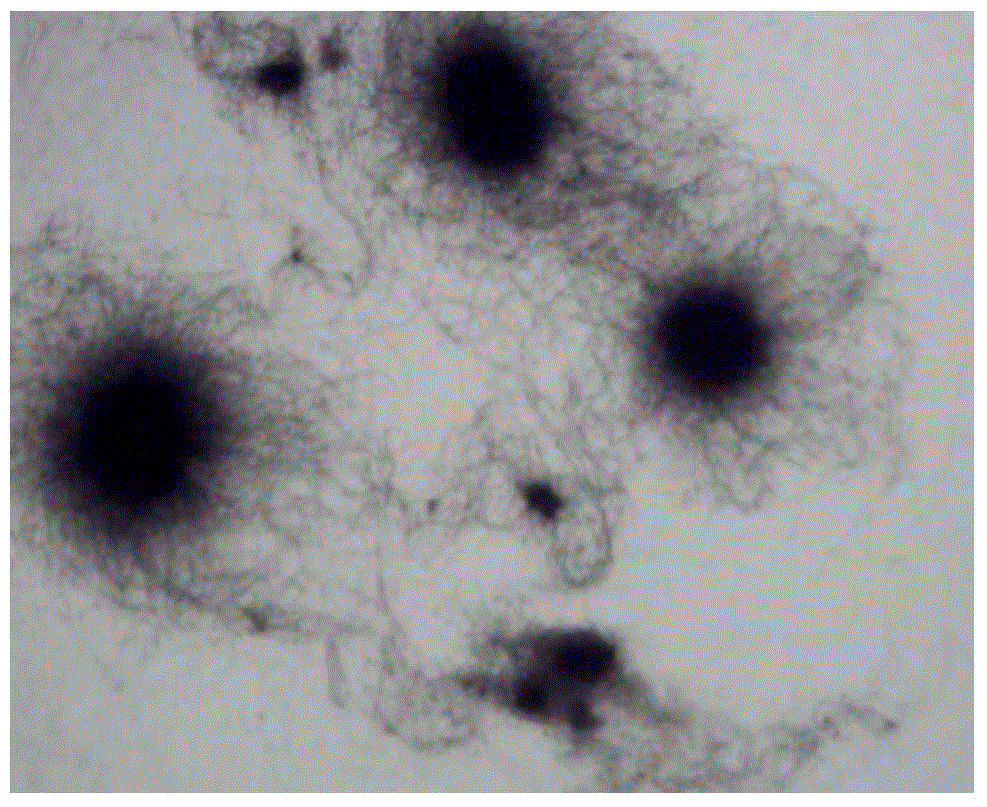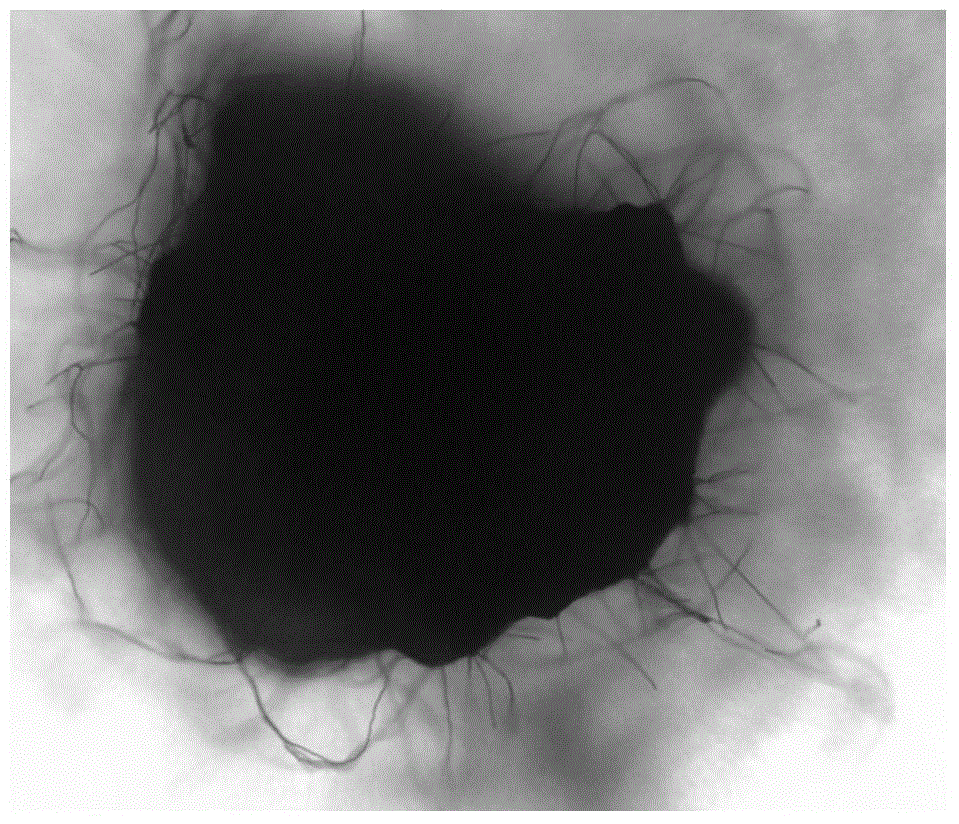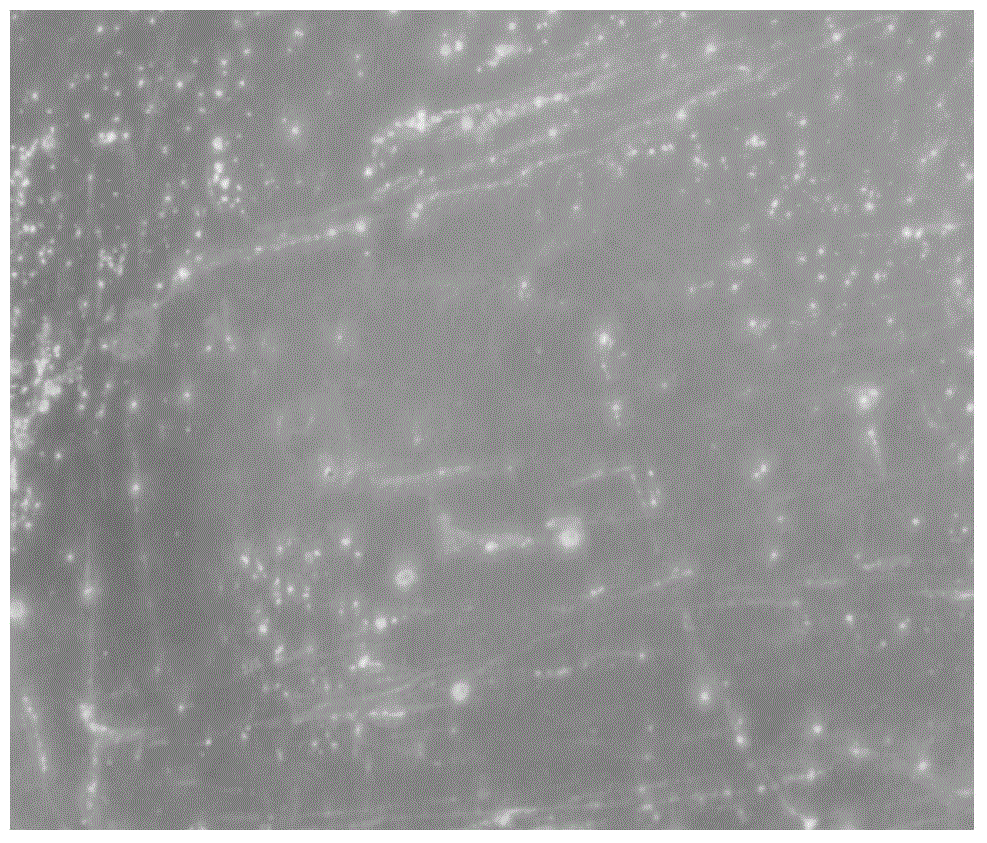Fermentation method and applications of paecilomyce lilacinus microsclerotia
A technology of Paecilomyces lilacinus and fermentation method, applied in the field of biological preparations, can solve the problems of short shelf life, poor resistance to stress, inconvenient storage and transportation, etc., and achieve the effects of long shelf life, low production cost and short fermentation period
- Summary
- Abstract
- Description
- Claims
- Application Information
AI Technical Summary
Problems solved by technology
Method used
Image
Examples
Embodiment 1
[0022] Example 1 Paecilomyces lilacinus Microsclerotia Induction Culture Solution Formula Optimization and Induction Process
[0023] 1. Preparation of Paecilomyces lilacinus inoculum suspension:
[0024] Inoculate the conidia of Paecilomyces lilacinus strain (from Chongqing Engineering Research Center of Insecticidal Fungus Pesticide) onto PDA plates, cultivate them for 12 days at 25°C, and sterilize with 0.1-0.5% Tween-80 Wash the mature conidia on the plate, adjust the concentration of conidia, and prepare 1.0×10 8 spores / ml of spore suspension.
[0025] 2. Formula screening of induction culture medium
[0026] 1) Inorganic salt ion concentration:
[0027] to add KH 2 PO 4 :4.0g / L, CaCl 2 2H 2 O:0.8g / L, MgSO 4 ·7H 2 O:0.6g / L, CoCl 2 ·6H 2 O: 37mg / L, MnSO 4 ·H2O:16mg / L, ZnSO 4 ·7H 2 O:14mg / L is used as the inorganic salt ion of cultivating micro-sclerotia.
[0028] 2) Selection of carbon and nitrogen sources
[0029] Glucose with a concentration of 10g / L was ...
Embodiment 2
[0037] Embodiment 2 Morphological and structural observation of Paecilomyces lilacinus microsclerotia
[0038] Paecilomyces lilacinus strain was treated with SDA Ⅱ Liquid medium, 25~28°C, 200~250rpm for shaker culture, microscopic observation of the microsclerotia production status in the liquid medium: 1-2 days after inoculation, the conidia germinated to form hyphae, and the bacterial liquid The color did not change, but the viscosity of the culture medium and the biomass of the bacteria gradually increased; after 3 days of cultivation, the color of the bacteria began to turn brown. At this time, the amount of bacteria in the bacteria suspension continued to increase, and the front end of some mycelium began to expand, which was obviously thickened ; Observed under an optical microscope, it was found that the hyphae began to aggregate. After cultivating for 4 days, the brown color of the fermented bacterium liquid continued to deepen, and a sample was taken and observed und...
Embodiment 3
[0039] Example three The sporulation ability analysis of Paecilomyces lilacinus microsclerotia
[0040] Paecilomyces lilacinus strains were treated with SDA Ⅰ 、SDA Ⅱ 、SDA Ⅲ 、SDA Ⅳ The liquid culture medium is cultured on a shaker at 23-28° C. and 200-250 rpm. After 6 days, 5% diatomaceous earth is added to the fermented culture liquid, dried at 35° C. for 24-48 hours, and crushed. Afterwards, the mixture was respectively passed through a 60-mesh standard sieve to separate the micro-sclerotia from the diatomite, and the micro-sclerotia were sealed and stored at room temperature.
[0041] Get 10 mg of the micro-sclerotia obtained from the culture of the four culture media and evenly inoculate them on the water agar plate. After culturing for 14 days at 25°C, wash the mature conidia on the plate with 0.5% Tween-80 sterilized water. Hemocytometer count, found SDA Ⅰ Combination cultured microsclerotia can produce 3.7×10 per mg 5 spores, SDA Ⅱ Combination cultured microsclero...
PUM
 Login to View More
Login to View More Abstract
Description
Claims
Application Information
 Login to View More
Login to View More - R&D Engineer
- R&D Manager
- IP Professional
- Industry Leading Data Capabilities
- Powerful AI technology
- Patent DNA Extraction
Browse by: Latest US Patents, China's latest patents, Technical Efficacy Thesaurus, Application Domain, Technology Topic, Popular Technical Reports.
© 2024 PatSnap. All rights reserved.Legal|Privacy policy|Modern Slavery Act Transparency Statement|Sitemap|About US| Contact US: help@patsnap.com










